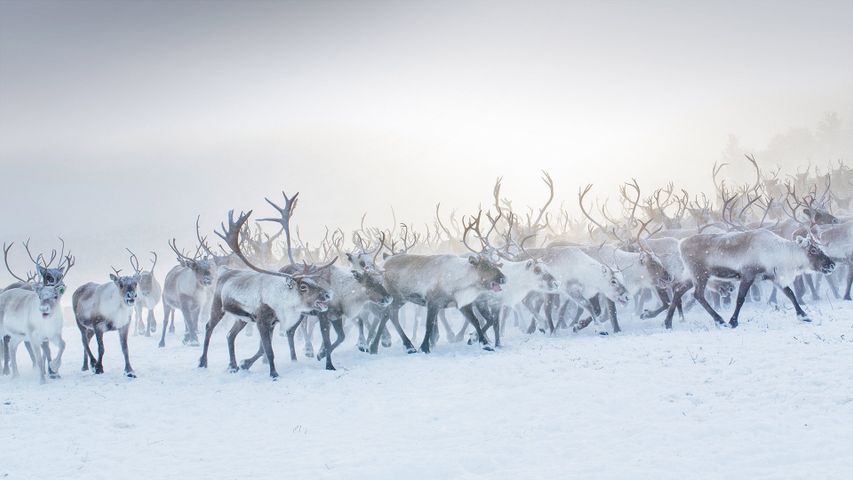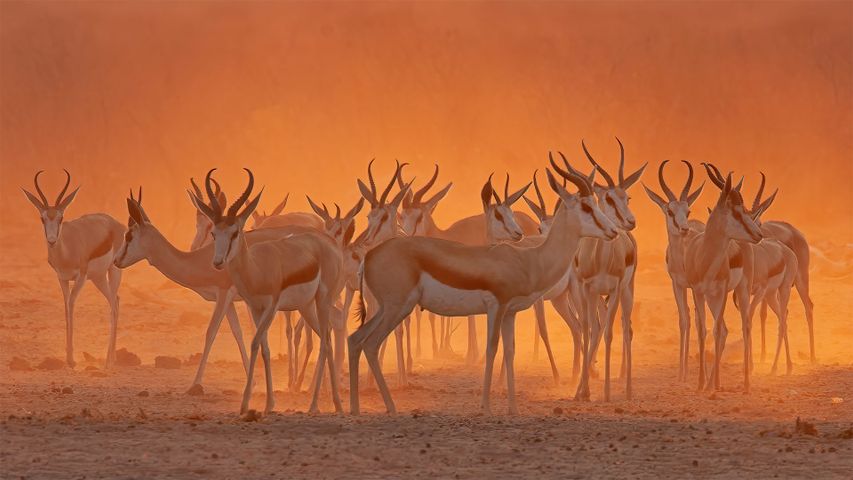A herd of reindeer in Norway
© Lena Granefelt/plainpictur
Ready for take-off?. Then one foggy Christmas Eve…
While many associate reindeer with Christmas, these animals are magical in their own way. Well-adapted to live in cold, rugged Arctic regions, they're built to withstand freezing temperatures with the help of thick fur and noses that warm the air before they breathe it in. Reindeer were introduced to Christmas lore in 1823 with the poem The Night Before Christmas. Written by Clement Moore, the verses paint a picture of Father Christmas and his sleigh, driven by eight flying reindeer.
In 1939, Robert May introduced Rudolph the Red-Nosed Reindeer to the Christmas tradition when his employer, Montgomery Ward, asked him to write a story that the department store could use as a promotion during the busy Christmas shopping season. The short story became popular among children and was later turned into an animated feature. Rudolph even got his own song and eventually became one of the most famous and beloved Christmas symbols.
Even though science doesn’t support the theory of flying reindeer, you might want to look twice tonight when gazing up at the starry sky, you never know what you might see.
Related Images
Bing Today Images




 Red deer, Canada
Red deer, Canada
 Svalbard reindeer in Van Mijenfjorden NP, Norway
Svalbard reindeer in Van Mijenfjorden NP, Norway
 Gemsboks in the savannah, Botswana
Gemsboks in the savannah, Botswana
 Caribou running in snow, Alaska, USA
Caribou running in snow, Alaska, USA
 Springboks near a waterhole in Etosha National Park, Namibia
Springboks near a waterhole in Etosha National Park, Namibia
 Herd of red deer stags in a snow-covered pine forest, Cairngorms National Park
Herd of red deer stags in a snow-covered pine forest, Cairngorms National Park

